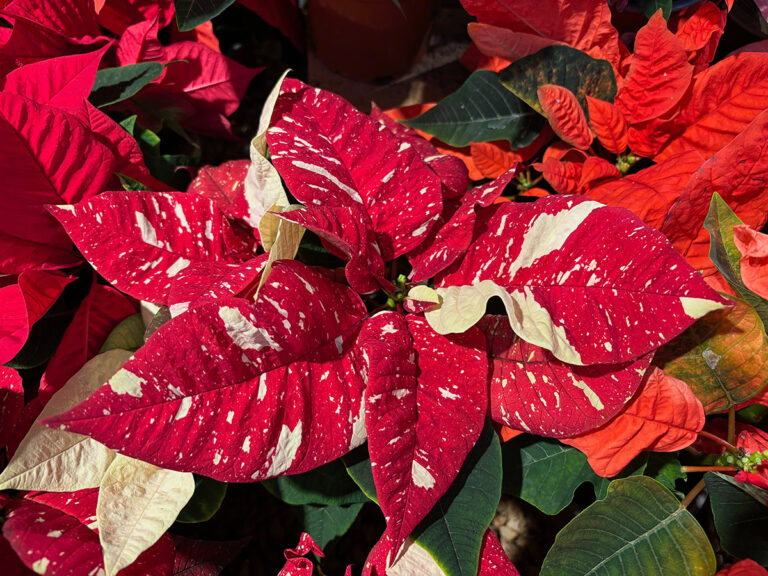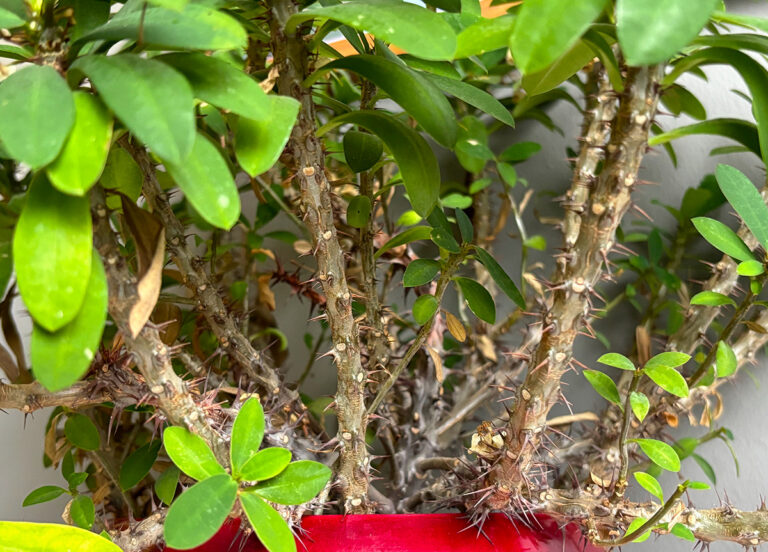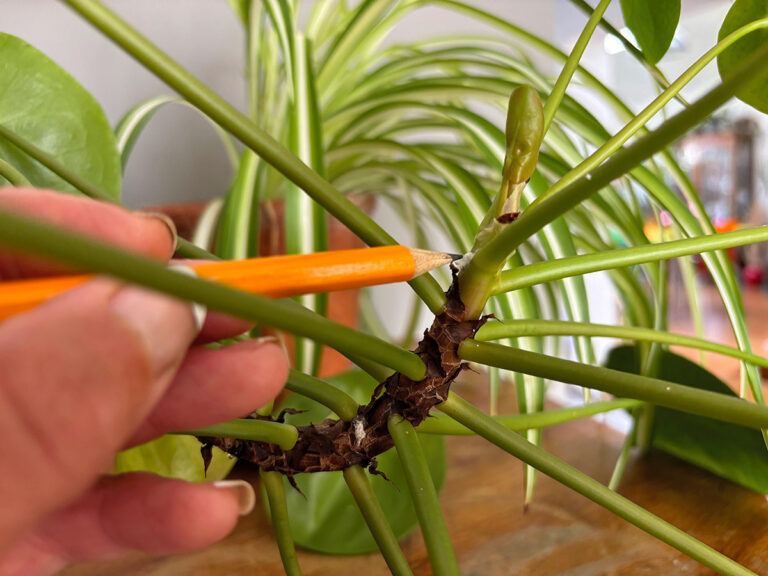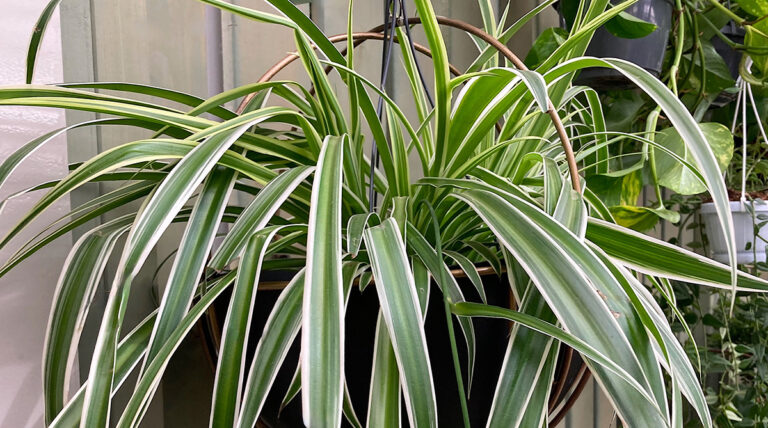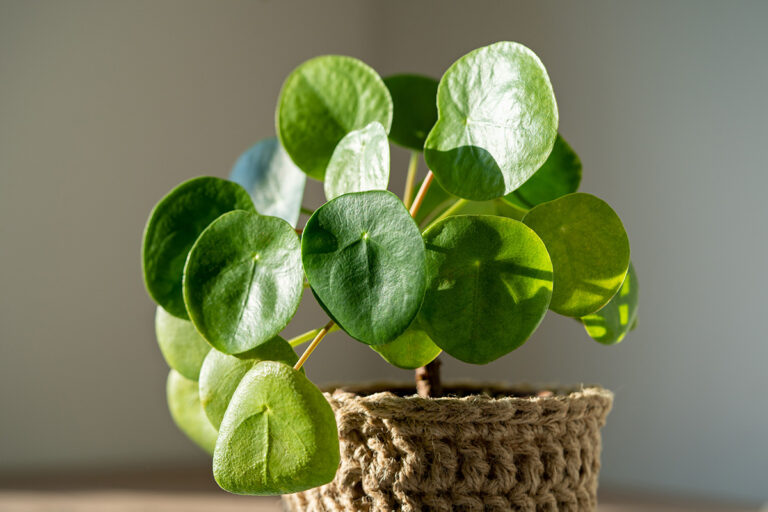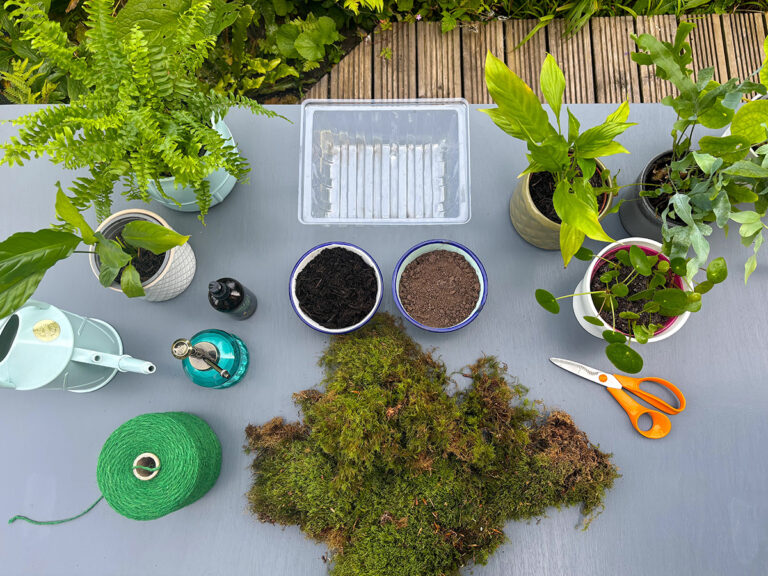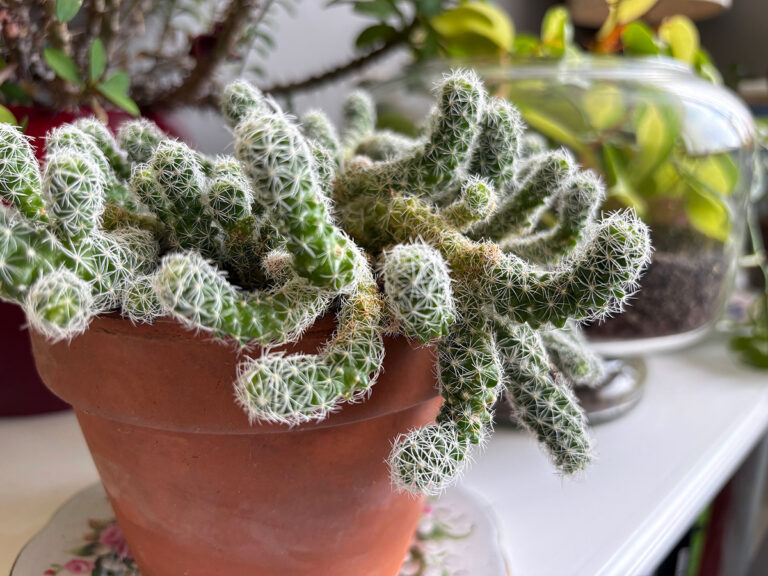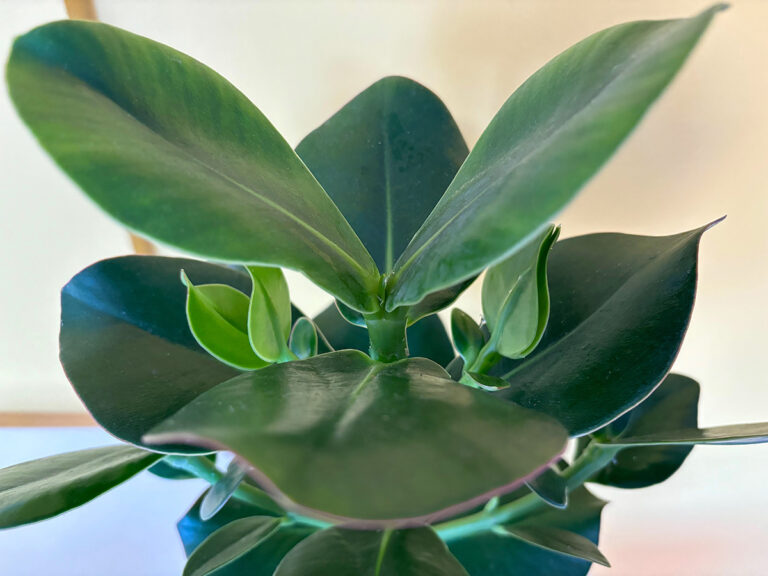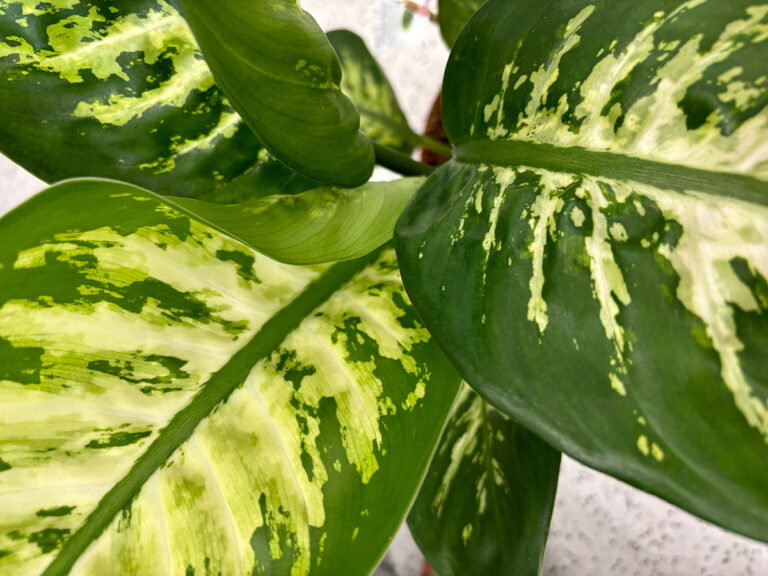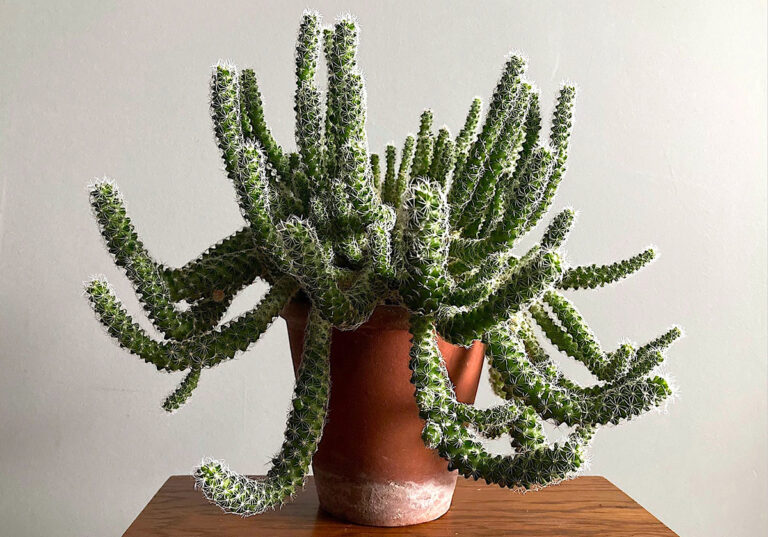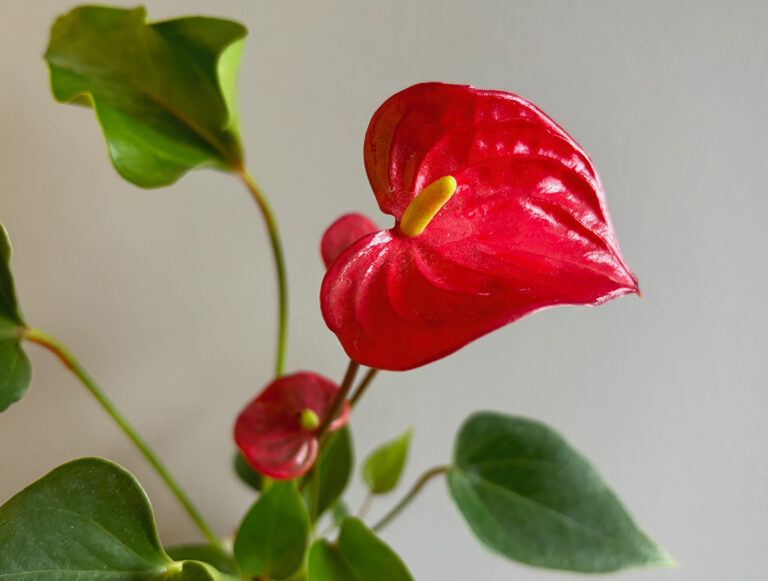Crassula ovata, Jade plant also known as the lucky plant or money tree is often associated with the orient but is in fact a subshrub native to South Africa. This low maintenance perennial succulent has fleshy green stems which turn brown and woody as they age giving the appearance of a dwarf tree.
Jade plants are slow growing, long lived and can reach a substantial size over time. Their oval-shaped, waxy, thick leaves, roots and stem have the ability to store water; a perfect adaptation for surviving the dry South African climate.
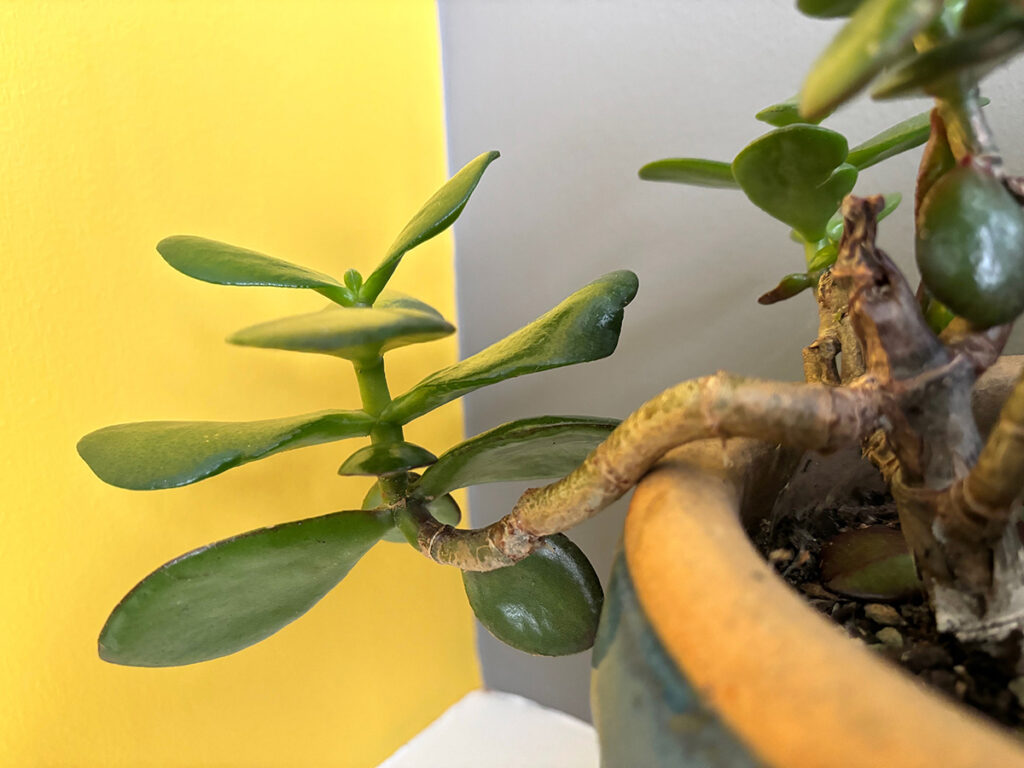
It has become a symbol of prosperity, wealth and good fortune, adopted as a cherished gift for Chinese New Year as well as house warmings. Crassula are easy to look after but discover a few pointers to ensure your good luck charm stays healthy.
Light
Jade plants love light so find a bright windowsill or shelf. Avoid gloomy shady spots or the plant will produce leggy growth. Turn the pot regularly so growth is even rather than leaning towards a light source.
Crassula will let you know if they are receiving enough light. Light stimulates the production of the colour pigment anthocyanin so in the right conditions leaves develop a red hue along the edge but if the whole leaf starts to turn red this is an indicator of too much light exposure. Try your plant in different locations in your home until you find a spot that works.
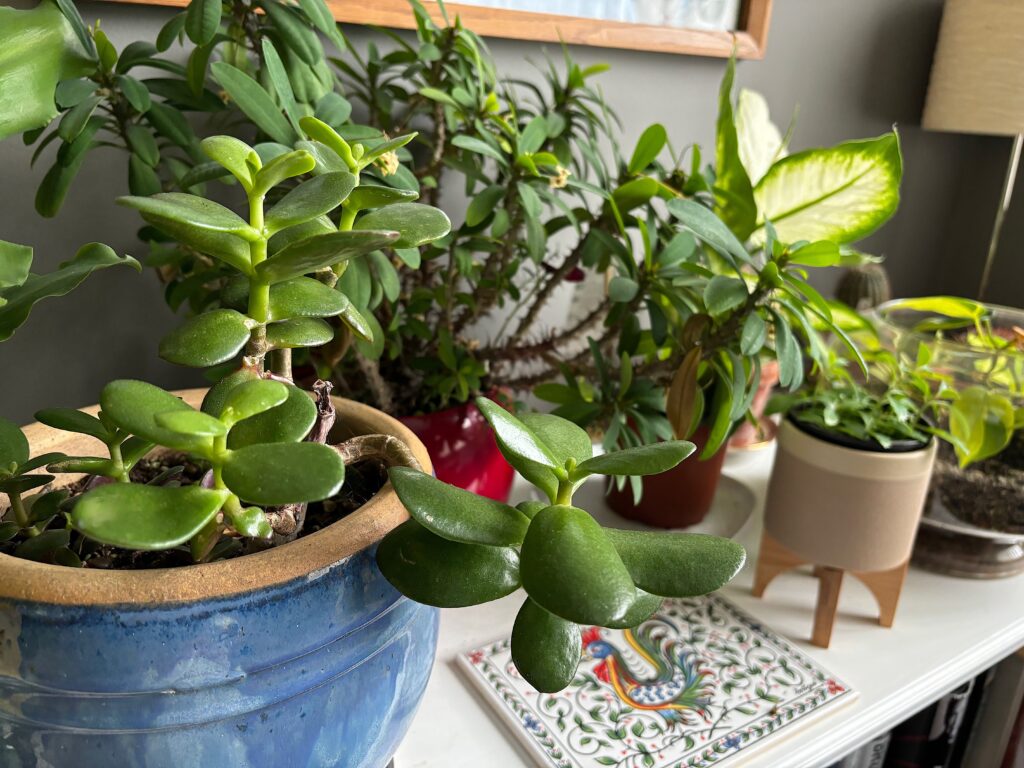
Household dust can build up quickly on these flat glossy leaves so dust regularly or it may hinder photosynthesise. If you are short of time pop the pot in the shower and gently wash off the dust with tepid water.
Water
Aim to water every week or two from spring to summer when the top soil is dry and leave a longer gap from autumn to winter. Get the balance right between not over or under watering; avoid swamp-like or desert conditions. The easiest way to kill a jade plant is by over watering; these desert dwellers need a period of drying out between waterings to avoid root rot.
Temperature
Average household temperatures around 18-24°C (64-75°F) are ideal. Crassula prefer consistent warm temperatures so avoid draughty cold windows and hot radiators.
Feeding
Jade plants require very little food. Once a month or every six weeks will be ample from March to September; stop feeding over winter. Dedicated houseplant foods contain the right proportion of nutrients to keep houseplants healthy.
Plantsmith’s Invigorating Cacti & Succulent Feed has the perfect balance of nutrients to give succulents everything they need to thrive, encouraging healthy green stems and strengthening disease tolerance.
To apply, shake the bottle then add 5 ml (approx. 4 pumps from 500ml bottle) or dilute two pipettes from the 100ml bottle per litre of tepid rainwater; mix then water onto the soil.
Soil
Buy a ready-made peat-free cactus and succulent compost mix straight off the shelf or make your own free-draining substrate by mixing together compost, horticultural sand and perlite for aeration or coir.
Propagation
Jade plants are easy to propagate.
Gently twist a healthy leaf sideways to remove and allow it to callous over for a few days. Prepare a small pot or tray with sandy cactus and succulent compost. Water and let it drain. Lay the leaves on the soil surface and place in a warm, bright spot, out of direct sunlight; mist regularly. Do not place in a propagator as the humidity is likely to promote rot. Keep the soil moist but not soggy.
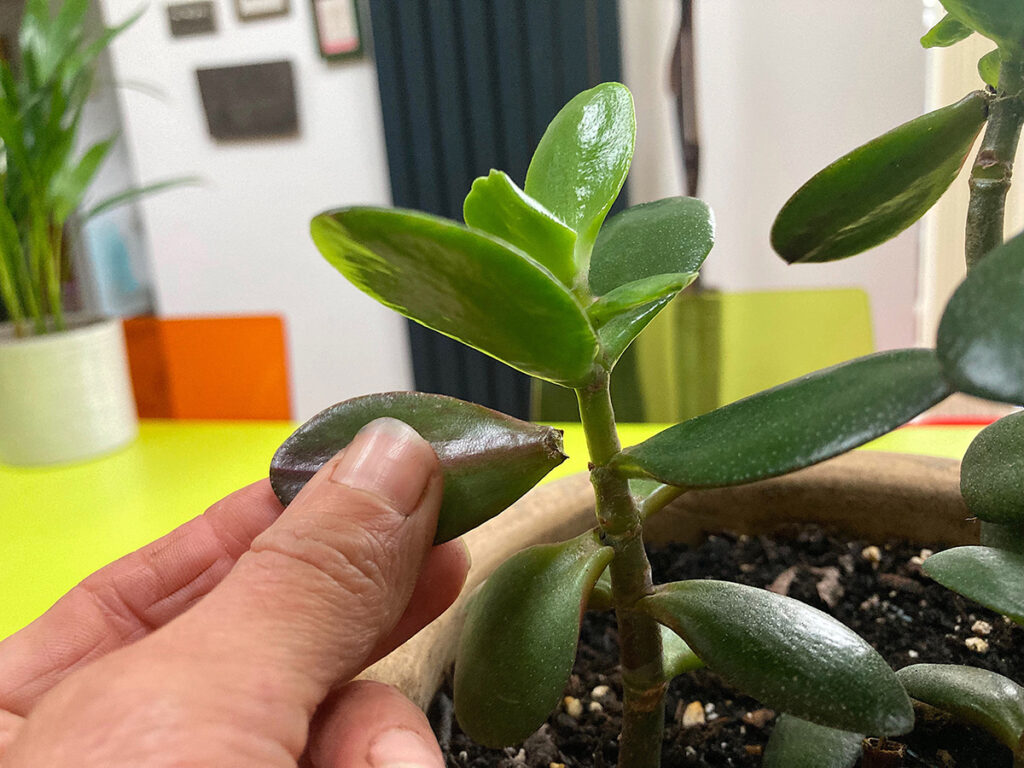
These fleshy leaves will take a few weeks to root but after a month or so tiny clusters called plantlets will appear at the base. Once these plants have established carefully remove from the tray and pot on.
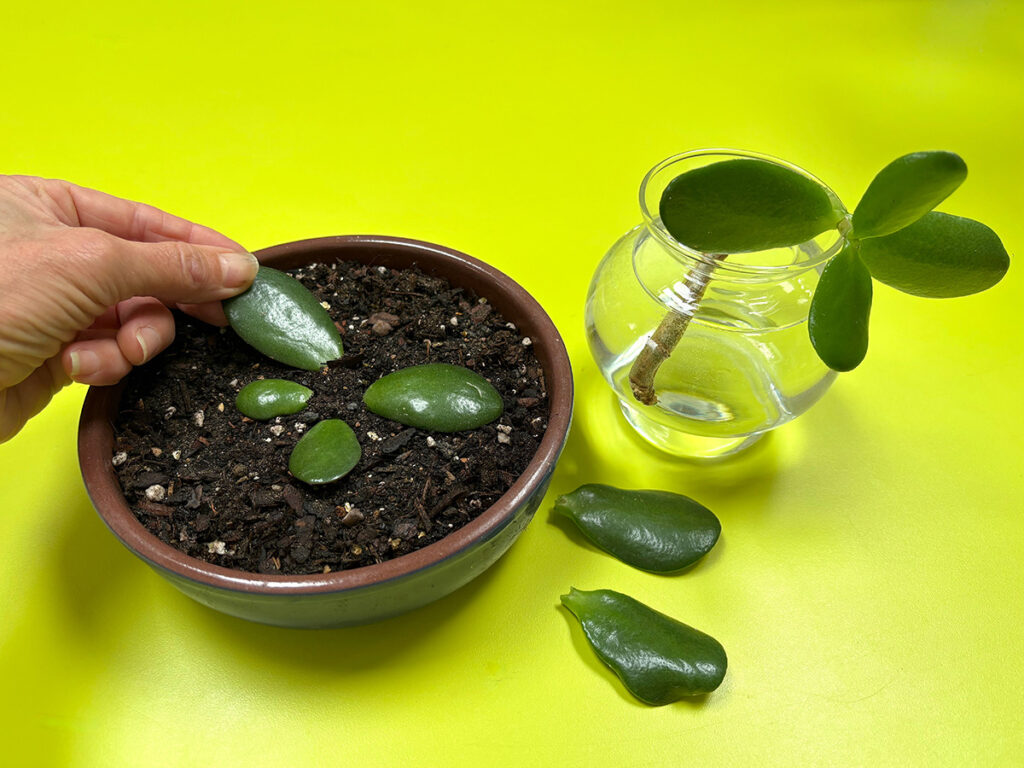
Alternatively take a stem cutting with two to three leaf nodes. Remove the lower leaves and let the cutting wound harden off for a few days then pop it in a glass of water or straight into a pot of cacti and succulent compost. Wait for the roots to develop and pot on once established.
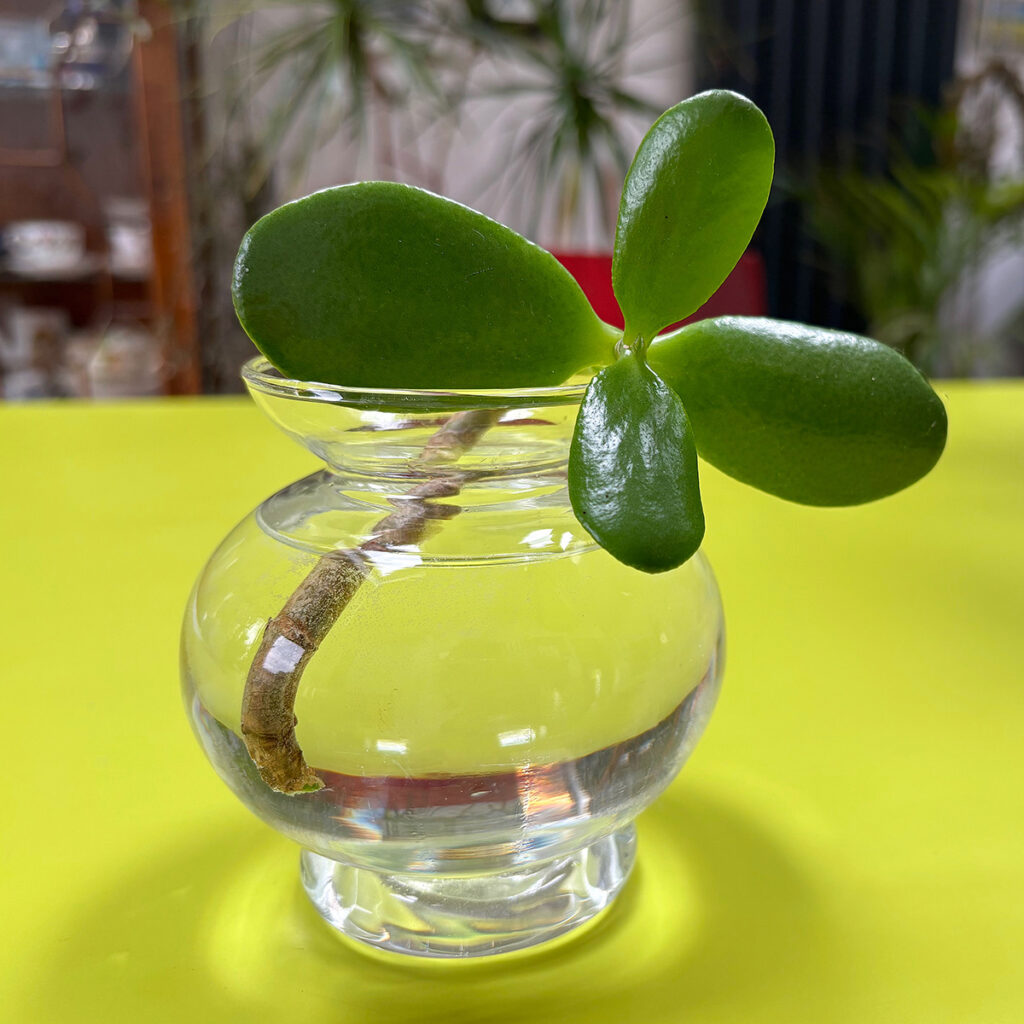
Occasionally jade plants get top heavy. Return balance by pruning off the top stems to retain a stockier houseplant.
Pests
Mealybug can plague jade plants. The juicy succulent flesh is simply too tempting for these sap-suckers to resist so keep an eye out in the houseplant’s leaf joints and remove by hand if spotted as well as regularly spraying with Plantsmith’s Bug Control Spray to deter an infestation. Also keep an eye out for scale and spider mite.

Problem solver
Leaf fall
If leaves start falling off this could be a sign that the plant is not receiving enough light so move the pot to a brighter spot.
White spots on leaves
White spots on leaves are salt deposits indicating mineral build up in the foliage. Use rainwater on your houseplants rather than tap water as tap water contains high levels of calcium which can gather in the soil and be absorbed by roots.
Mushy leaves
Overwatering will cause roots and foliage to rot so ease back watering and make sure the plant pot has good drainage.
Yellow Leaves
Yellowing leaves can be a sign of overwintering or an over-fertilised or nutrient deficient plant. Adjust your watering and feeding routine.
White fur on leaves
Powdery mildew can develop if your jade plant is situated in a highly humid spot with little air flow. Move it to a more favourable location.
Safe for pets?
Be aware jade plants are toxic to cats and dogs.
Fun Facts
According to Feng Shui you can welcome wealth to your home if you place your jade plant in a south-east direction in your hall; to encourage harmony and health place it in an east direction.
In South Africa jade plants are used for treating nausea and in China diabetes.
Jade plants are believe to have air purifying properties so are a great plant to have in the home and as long as there is plenty of sunlight and the odd well timed water and feed then these houseplants pretty much look after themselves.


